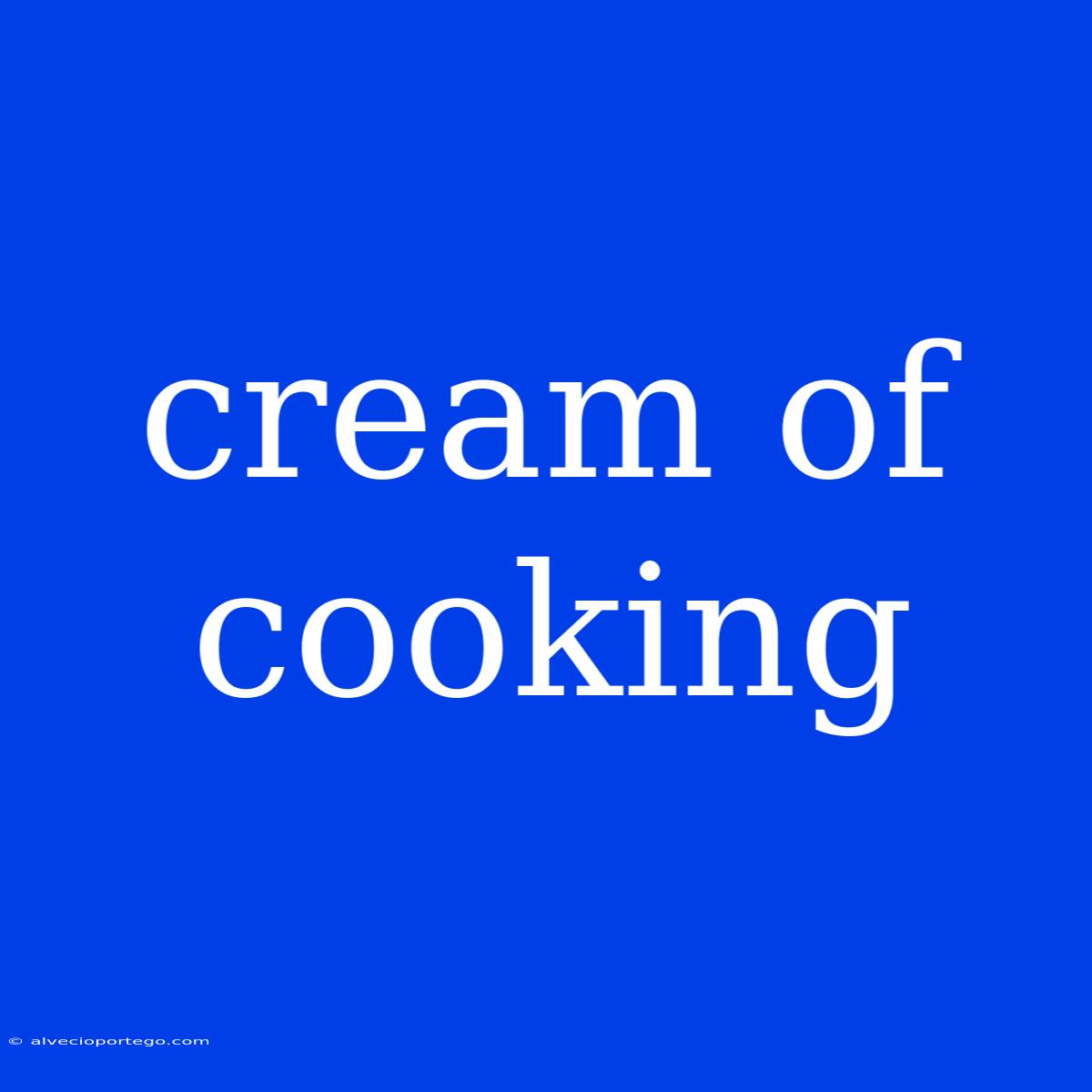Cream of Cooking: A Versatile Ingredient for Culinary Success
Cream is a culinary staple that transcends mere ingredient status and earns a spot as a culinary hero. Its richness, velvety texture, and subtle, yet distinct flavor lend themselves to an array of dishes, from savory soups and sauces to decadent desserts.
Understanding Cream
Cream is essentially the fatty layer that naturally rises to the top of milk. Its percentage of fat content determines its thickness and richness, influencing its culinary applications.
- Heavy Cream (Whipping Cream): This is the richest cream, with a minimum of 36% fat content. It whips into fluffy, stable clouds, ideal for topping desserts and enriching sauces.
- Heavy Whipping Cream: This type is often used interchangeably with heavy cream, but it may have a slightly higher fat content, allowing for even more stable whipped cream.
- Whipping Cream: With a slightly lower fat content (at least 30%), this cream is still suitable for whipping but results in a less dense, less stable whipped cream.
- Half-and-Half: A mixture of half whole milk and half cream, this option offers a milder richness and is often used in coffee or as a thinner alternative to heavy cream.
- Light Cream (Table Cream): This cream boasts a lower fat content (around 18-20%), making it a lighter option for cooking and adding a touch of richness to beverages.
Culinary Applications of Cream
The diverse range of cream types allows for various culinary applications, from enriching sauces and soups to adding a luxurious touch to desserts.
Savory Dishes:
- Soups: Creamy soups like mushroom soup, broccoli cheddar soup, and potato leek soup achieve their velvety texture and richness thanks to cream.
- Sauces: Cream-based sauces like Alfredo sauce, Mornay sauce, and béchamel sauce are staples in many cuisines, offering a rich and flavorful base for pasta dishes, vegetables, and meats.
- Pastries: Cream adds a layer of richness and moisture to pastries like éclairs, cream puffs, and croissants.
Desserts:
- Whipped Cream: The iconic topping for pies, cakes, and desserts, whipped cream offers a light and fluffy texture and a touch of sweetness.
- Cream-based Desserts: Creamy desserts like panna cotta, crème brûlée, and mousse showcase the versatility of cream and its ability to create delicate, melt-in-your-mouth textures.
- Ice Cream: Cream is a key ingredient in ice cream, contributing to its smooth texture and creamy richness.
Tips for Using Cream in Cooking
- Substitutions: When substituting cream in recipes, consider using milk mixed with cornstarch or a non-dairy alternative like coconut cream.
- Whipping: For successful whipping, ensure your cream and bowl are cold. Avoid over-whipping, as it can result in a curdled texture.
- Heating: Be cautious when heating cream, as it can separate. Simmer gently and avoid boiling.
Cream is an essential ingredient for both novice and experienced cooks, offering endless possibilities for culinary creations. Its ability to add richness, texture, and flavor makes it a valuable addition to any kitchen.

